Transatlantic Race: Good day for Germany
Published on July 12th, 2015
(July 12, 2015) – German boats were fourth and fifth home on the water in the Transatlantic Race. Tilmar Hansen’s Outsider crossed the finish line off the Lizard at the southernmost tip of Cornwall, at 13:55:27 UTC (09:55:27 EDT) on Saturday and completed the Coastal Race on to Cowes, finishing off the Royal Yacht Squadron just after dawn this morning.
“Being back in Cowes is a very emotional moment for me,” said Hansen. “We have very nice memories from 1983 and 1985 with our [victorious] Admiral’s Cup campaigns with Outsider.”
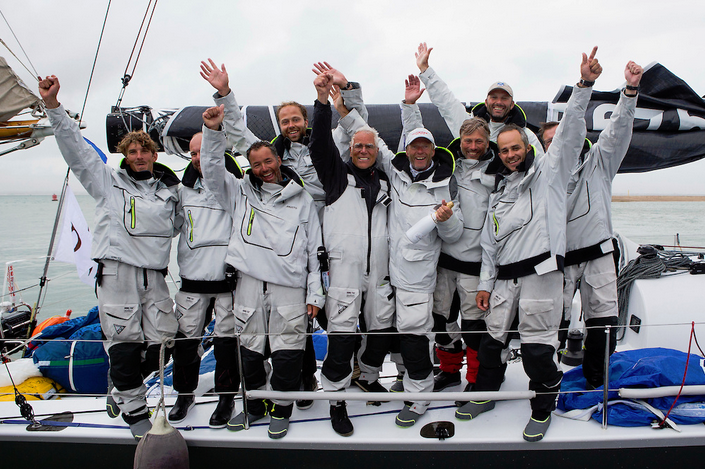
Outsider crew shows enthusiasm for their impressive finish in the Transatlantic Race 2015. (photo credit Emma Louise Wyn Jones Photography)
This was the present Outsider’s second Transatlantic Race following the HSH Nordbank Blue Race in 2007 in which she claimed line honours, IRC Class 2 and was second overall under IRC. The German team looks set to repeat the latter result in the present race – a performance all the more remarkable because its satellite communications broke down early in the race, and they were unable to receive vital weather information.
“These days there is so much weather routing and technology, it is a good feeling that you can do it without that help, just like the good old days,” remarked Hansen. “We had to go back to basics, sticking to the rhumb line, hoping that we wouldn’t fall into any wind holes.”
Outsider, a New Zealand designed and built Elliot 52, usually based in Kiel, has a canting keel and provided a wet ride for the crew. Hansen described it as being like “a constant fire drill where we were the fire!” This was particularly bad early on in the race as they were crossing the Gulf Stream. “The sea state would change dramatically, in seconds at times with the eddies. You went from flat water, when the racing was easy, to moments when you were surfing down huge waves and you had to slow down, especially at night time when you couldn’t see anything.”
The most wind they saw was only in the mid-30s. At times they saw peak boat speeds of 27 knots, but Hansen said they preferred to maintain a constant average speed of 16 to 17 knots, under jib top, staysail with one reef in the main.
“They did a really great job and worked like hell,” said Hansen of his crew led by Thomas Jungblut, whose tenure with the Outsider team dates back to the Admiral’s Cup campaigns 30 years ago. “They kept Outsider running and fighting and racing. We had no major damage, only little stuff, and we were amazed how well the boat sailed and was behaving in a long distance race. I am very, very happy about this amazing race.”
Crossing the finish line at 01:11:44 UTC (11 Jul 21:11:44 EDT) was Stella Nova, the Class 40 winner. Class 40s are built for ocean racing, so the big conditions the boats experienced crossing the Atlantic were not overwhelming for her. Burkard Keese’s team, which includes doublehanded round the world sailor Jörg Reichers, performed exceptionally, finishing more than 180 miles ahead of Michel Kleinjans’ second-place Class 40, Visit Belgium.
“It was a big victory for us. We expected to win, but not by that much,” admitted Keese. Of the final days of the race, he added: “There was a trough which was very difficult to cross, but other than that it was maximum boat speed, 18 to 24 knots for the last two days, which was amazing. When we arrived at Bishop Rock [off the Scilly Isles] the wind dropped down a bit, but we put the big spinnaker up and went through to the finish.”
During the race, they lost one sail, the Code 0, near the finish. On another occasion while sailing under spinnaker, Stella Nova caught a giant rope towing cable around their keel that required the crew to drop the spinnaker and reverse up to remove the rope. “I have never seen such a big cable. That was the catch of the day!” as Keese put it.
Otherwise Keese paid tribute to his crew and his Sam Manuard-designed Mach 40, built by JPS Productions in France.
Crossing the line off the Lizard at 10:10:59 UTC this morning (06:10:59 EDT) was the Open 60 Grey Power, skippered by 76-year-old Sir Robin Knox-Johnston, who in 1969 became the first man to sail solo non-stop around the world. According to Sir Robin this is his 24th transatlantic crossing and hopefully there will be a few more to come. “I’m pleased to have beaten 11 days and Rambler and Comanche over the line,” he said.
Sir Robin was sailing with a crew that included former RORC Commodore David Aisher and Dilip Donde, the first Indian to sail singlehanded around the world.
The next 24 hours are set to be busy ones at the Lizard with Lloyd Thornburg’s Phaedo³ expected later this afternoon (British time) followed by the maxi-monohulls Comanche and Rambler 88 tomorrow. The outcome of the final podium placers in IRC Class 4 after the giant schooner, Mariette of 1915, will also be decided. This will be between three different generations of racing yachts – the 1930s S&S classic Dorade, the 1979 generation McCurdy & Rhodes 48 Carina and the more modern Oyster Lightwave 48 Scarlet Oyster.
Follow the Race: Event website – Entry list – Tracking – Facebook
Report by Media Pro International
Background: The 2796nm Transatlantic Race 2015 extends west to east across the North Atlantic from Newport, USA to the Lizard, in southwest England. The staggered start plan had 13 boats starting June 28, 20 boats starting on July 1, and the four fastest yachts on July 5.

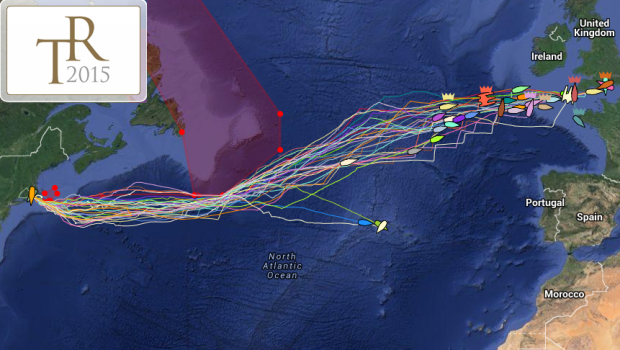


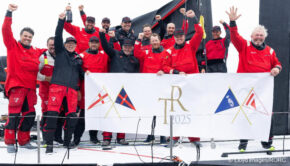
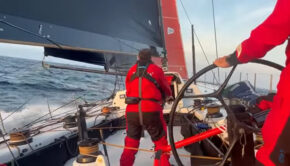
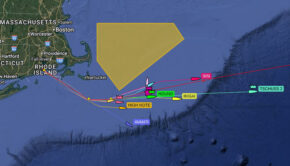
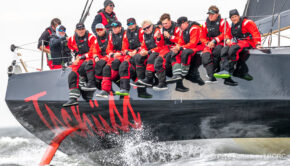
 We’ll keep your information safe.
We’ll keep your information safe.